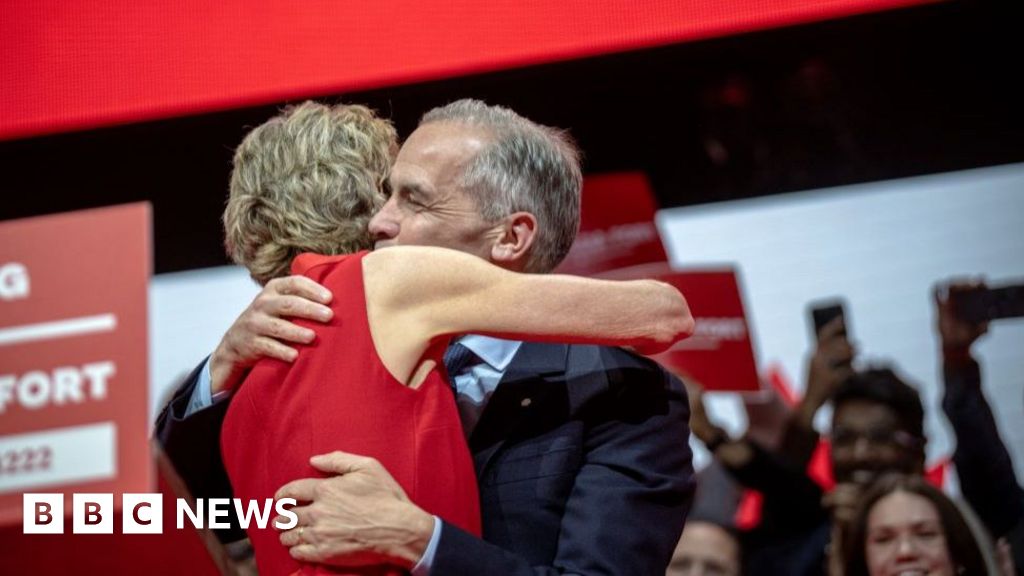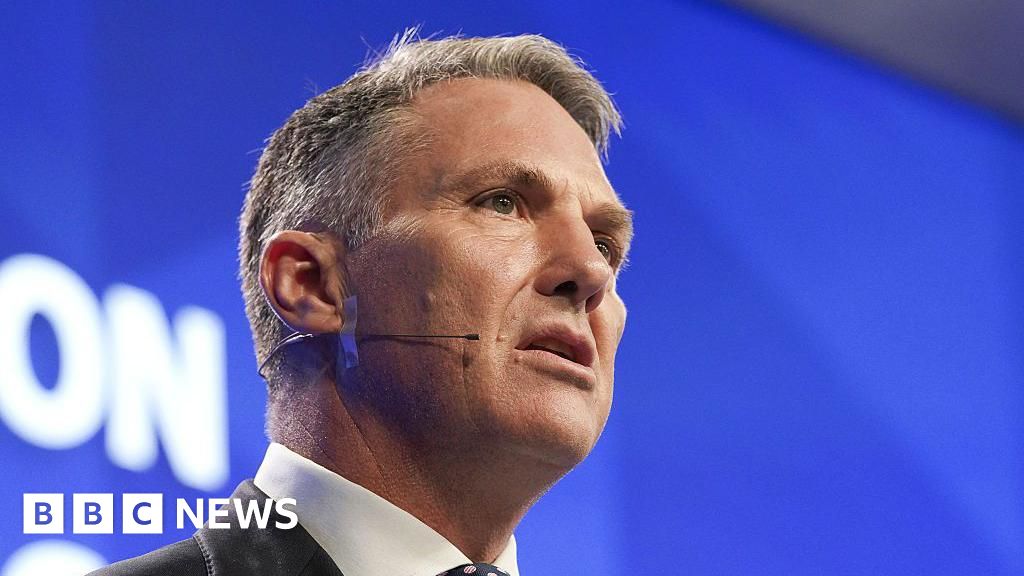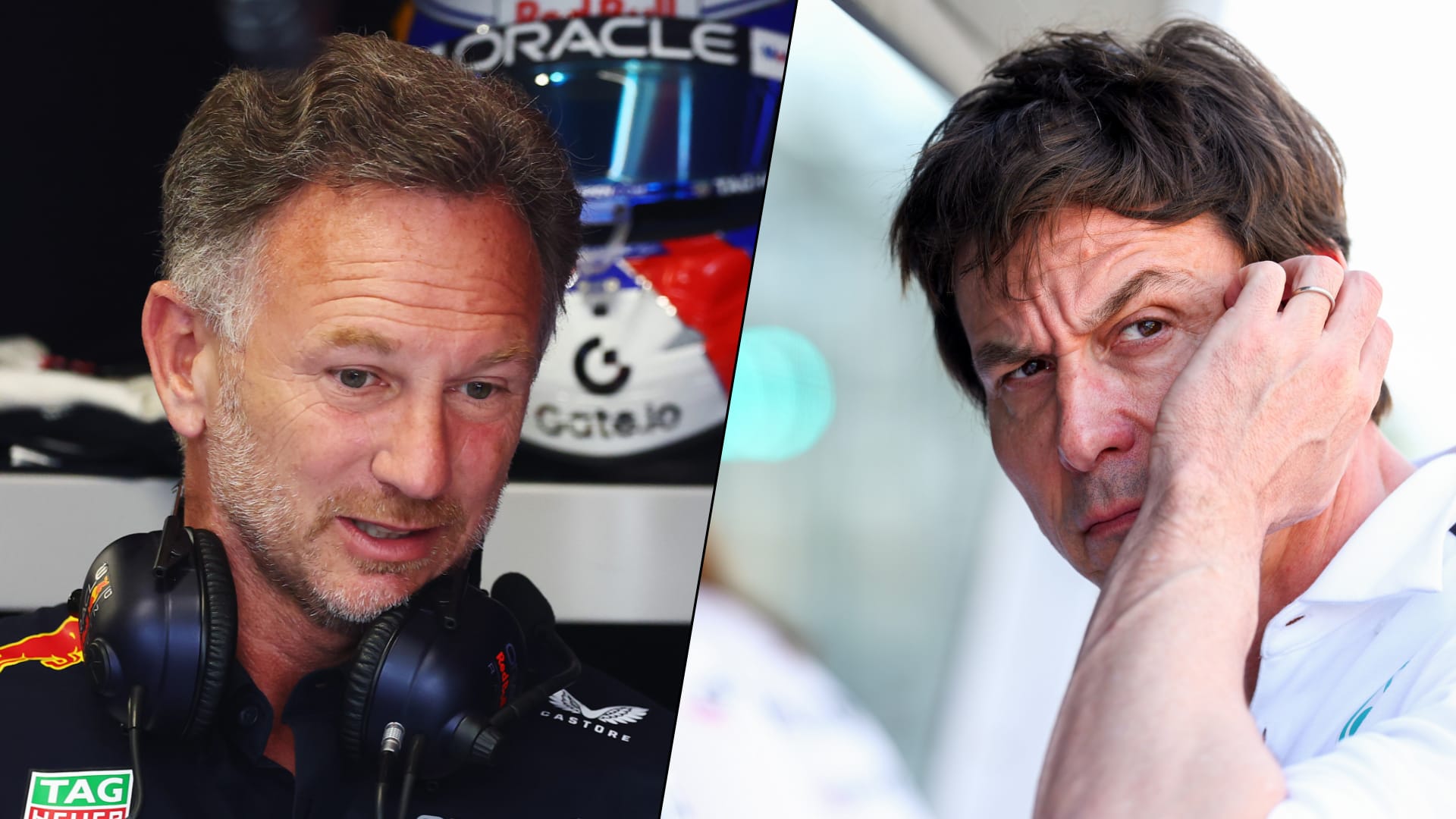“Why Carney’s Liberals won election”
Mark Carney’s Liberals have gained Canada’s federal election – using a backlash of anti-Trump sentiment to kind the following authorities.
It’s a beautiful political turnaround for a celebration who had been extensively thought-about lifeless and buried only a few months in the past.
It is not but clear if the social gathering – which has been in energy for nearly a decade – will have the ability to safe a majority as outcomes proceed to roll in.
Both approach, the prime minister faces main challenges, together with divisions within the nation laid naked by the marketing campaign.
Listed below are 5 takeaways from an election which noticed the Conservative opposition make main features however nonetheless lose.
1. Trump’s threats turned the defining situation
There is no such thing as a doubt the US president’s tariff threats and feedback undermining Canada’s sovereignty performed an outsized position on this election, all of the sudden making management and the nation’s financial survival the defining problems with the marketing campaign.
Mark Carney used it to his benefit, working as a lot in opposition to Trump as he did in opposition to his important opposition rival, Conservative chief Pierre Poilievre.
Carney warned Canada was at a disaster second, saying incessantly on the marketing campaign path – and in his victory speech – that Trump “wants to break us so America can own us”.
Poilievre introduced Trump up a lot much less incessantly in the course of the marketing campaign, focusing his message on home points – the price of residing, the housing affordability disaster, and crime – and focusing on the Liberals for his or her document on these issues.
Carney – who has declared the outdated relationship with the US “over” – plans to start out negotiations on a brand new financial and safety relationship instantly following the election.
Kevin O’Leary, a Canadian businessman near Trump who beforehand ran for the Conservative management, acknowledged it was a profitable marketing campaign technique.
“Right now Canadians are very frustrated with America and Carney has used that to his advantage,” he advised the BBC simply earlier than polls closed. “He was able to distract Canadians from his own mistakes… and say ‘Stop looking at that. Look south of the border and I can save you’.”
2. A shocking debut for a political newcomer
Initially of the 12 months, Carney was a former central banker with no expertise as a politician. By mid-March, he was being sworn in as prime minister – the primary to have by no means held elected public workplace earlier than – after a powerful win within the Liberal management race.
Now, he is confronted the Canadian voters as a primary time campaigner, gained an Ottawa-area seat within the Home of Commons and steered his social gathering to an unlikely victory.
Carney had lengthy flirted with getting into Canadian politics – and he seized his second, swooping in after former Prime Minister Justin Trudeau’s sudden resignation in January.
He additionally took full benefit of the brand new political panorama, leaning into his expertise serving to Canada and the UK navigate earlier crises at a time when Canadians had been feeling anxious about their financial future.
Trump’s late-March announcement of worldwide levies on overseas car imports gave Carney the prospect to publicly audition to maintain his job in the course of the marketing campaign. He was capable of step away from the path and tackle the prime minister’s mantle, establishing a name with the president and assembly US Cupboard ministers.

3. Conservatives make features however nonetheless fall brief
In a special election, this is able to have been a profitable one for the Conservatives.
In 2011, the Conservatives gained a majority with 39.6% of the vote. Conservative chief Pierre Poilievre is on observe to beat that this time, with roughly 41.4% of the vote with most polls reporting, according to Elections Canada.
They’re presently projected to have gained 144 seats – that is up from 120 at dissolution, when the election was known as in March.
However with the progressive vote coalescing across the Liberals, these numbers weren’t sufficient this time.
The bitter blow was Poilievre shedding his using (parliamentary seat) in Carleton, Ontario.
Solely months in the past his social gathering had a transparent path to victory and they’ll now want to determine a approach ahead after a collection of electoral defeats.
Whether or not that features the diminished determine of Poilievre as chief is the primary massive query for them to face.He’s the third chief they’ve had because the Liberals swept the 2015 election.
4. Divisions laid naked
The election outcomes have highlighted divisions in Canada that would pose a problem for Carney.
Notably, the Liberals are largely shut out of Alberta and Saskatchewan – oil-rich and gas-rich prairie provinces the place a way of alienation from the centre of energy in Ottawa has lengthy festered.
Even earlier than the election, some in these areas had been warning of a nationwide unity disaster if the Liberals gained one other mandate.
Carney touched on these divisions in his victory speech, acknowledging the thousands and thousands who had voted for a special consequence.
“I intend to govern for all Canadians,” he mentioned.
In the meantime, Poilievre’s message, which relentlessly centered on price of residing points, particularly on housing affordability, resonated with many younger individuals.
Help for the Conservatives outpaced Liberals by 44% to 31.2% amongst 18 to 34 12 months olds, a Nanos ballot on 25 April indicated. The divide was extra stark amongst youthful males.
Individually, Abacus Knowledge polling discovered that about 18% of 18 to 29 12 months olds had been apprehensive about Trump. That jumped to 45% for voters over 60, suggesting a polarisation on points between generations.
On Monday evening, Poilievre remarked on demographic breakthroughs Conservative had made, together with with youthful Canadians.
“We gave voices to countless people across the country who’ve been left out and left behind for far too long,” he mentioned.
5. Collapse of the left-wing New Democrats
On this election, the smaller political events have taken successful as Canadians select to park their votes with both the Liberals or the Conservatives – particularly the left-wing New Democrats, or NDP.
A number of the smaller events have misplaced a big quantity of vote share – notably the NDP who’ve acquired simply 6% of votes counted throughout Canada up to now, in contrast with 18% in 2021.
Jagmeet Singh, who has been NDP chief for nearly eight years, misplaced his personal using in British Columbia and introduced he’ll step down.
“Obviously I know this night is a disappointing night for New Democrats,” he mentioned, including: “We’re only defeated if we stop fighting.”
The Greens have additionally seen their vote share reduce in half from 2% to 1%.
Shachi Kurl, president of the Angus Reid Institute, a non-profit public opinion analysis organisation, advised the BBC that Trump’s rhetoric was behind the shift to the Liberals.
“The threats, the annexation talk, all of that has been a huge motivator for left of centre voters,” she mentioned.
The sovereigntist Bloc Québécois have maintained a vote share of round 7%. They’re on observe to win 23 seats in Quebec.
That is primarily based on round 97% of polls reporting.
Canada would not have a two-party system, despite the fact that it has traditionally voted in conservative or liberal governments in some kind.
Within the nation’s political system, these smaller events nonetheless play a task in Parliament. Each the NDP and the Bloc have at some factors fashioned Official Opposition within the Home of Commons.
Have any questions or want help? Contact us here. For extra insights, go to our website.
Learn More…










